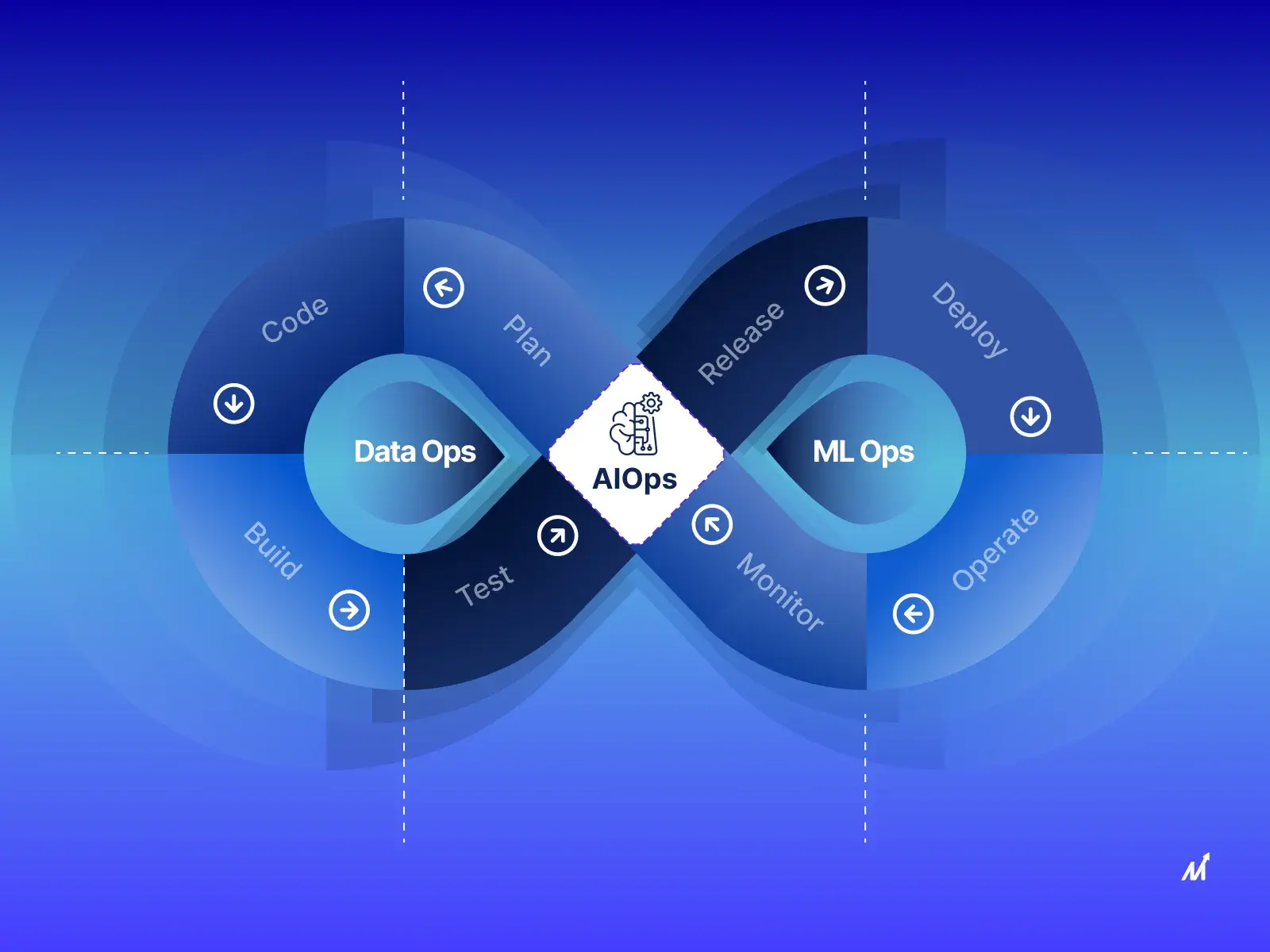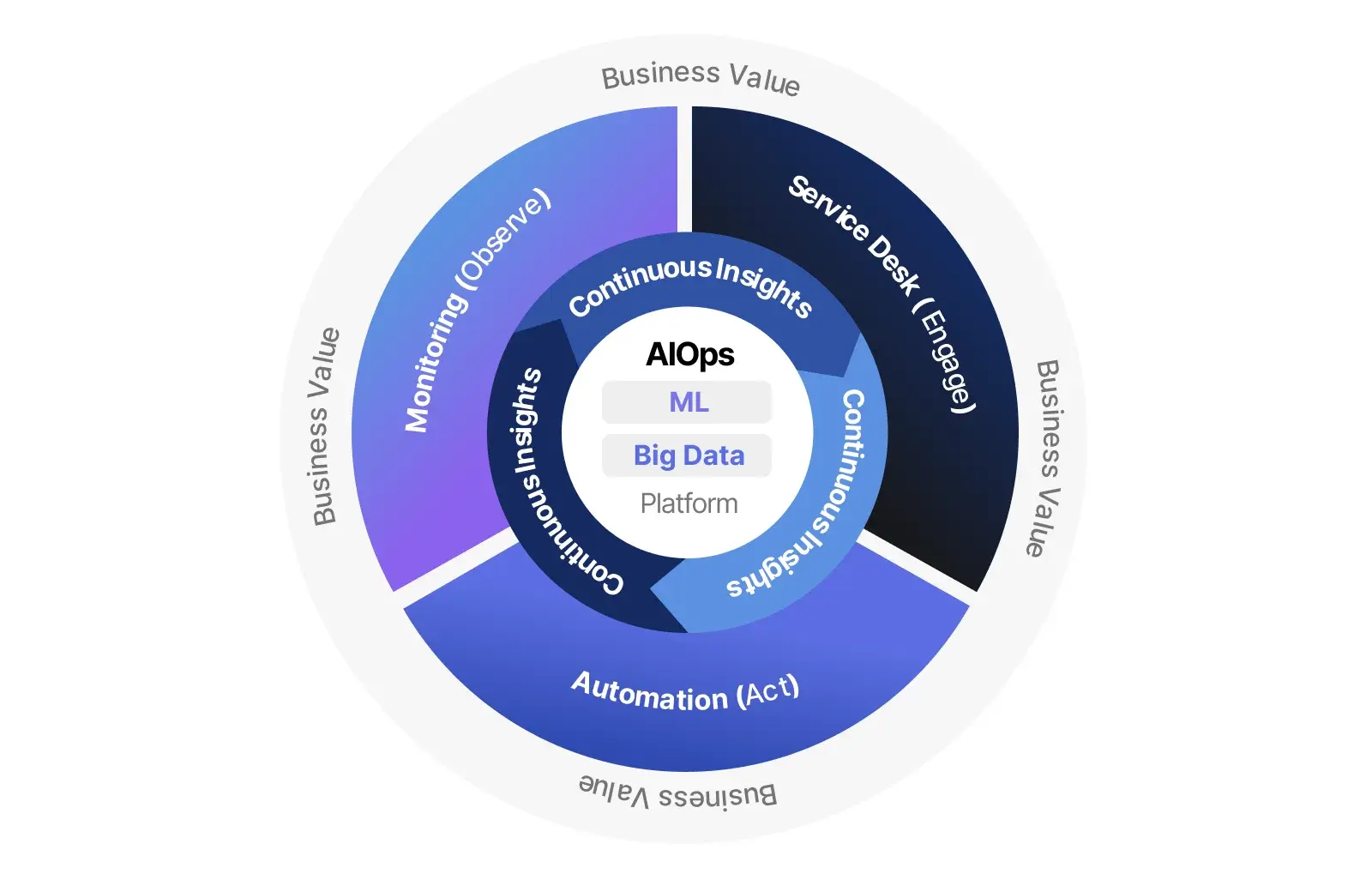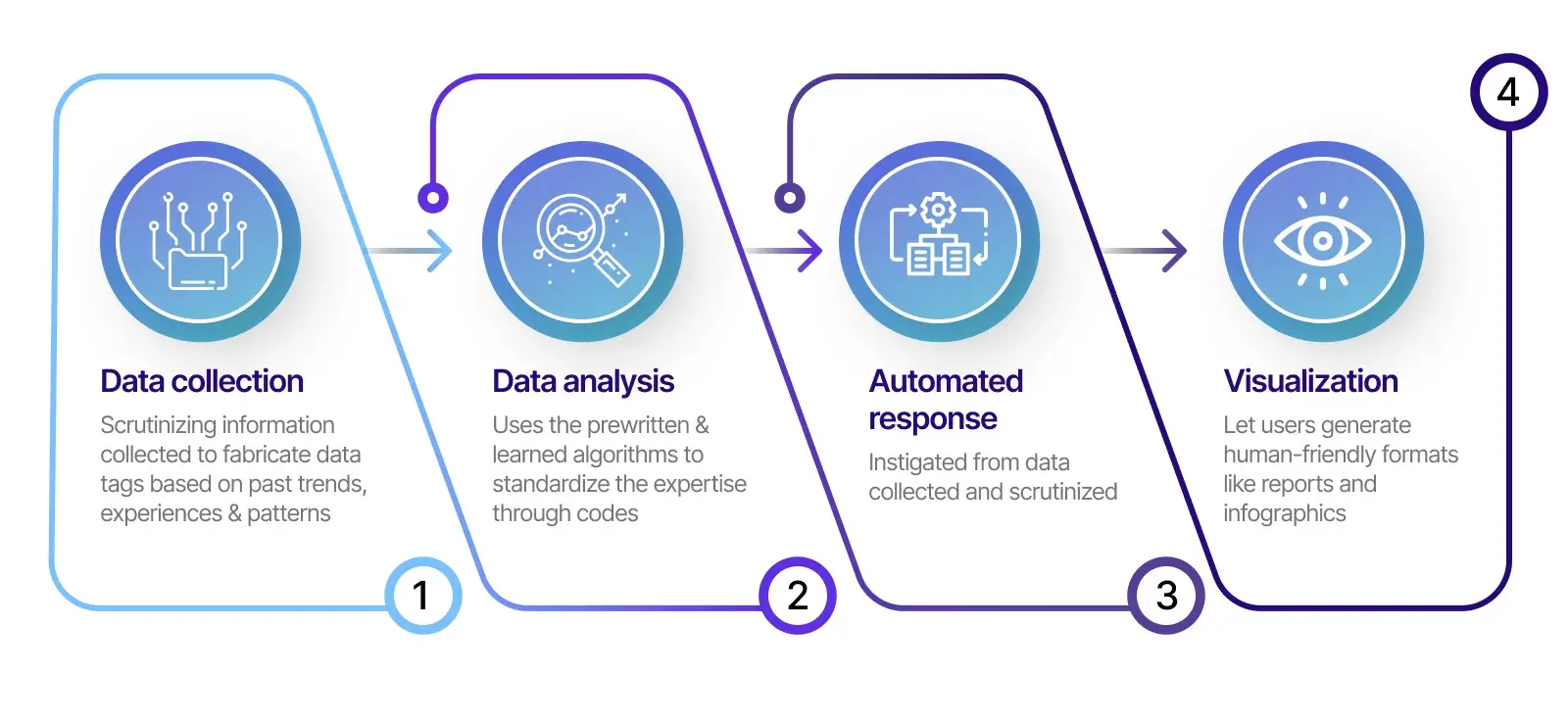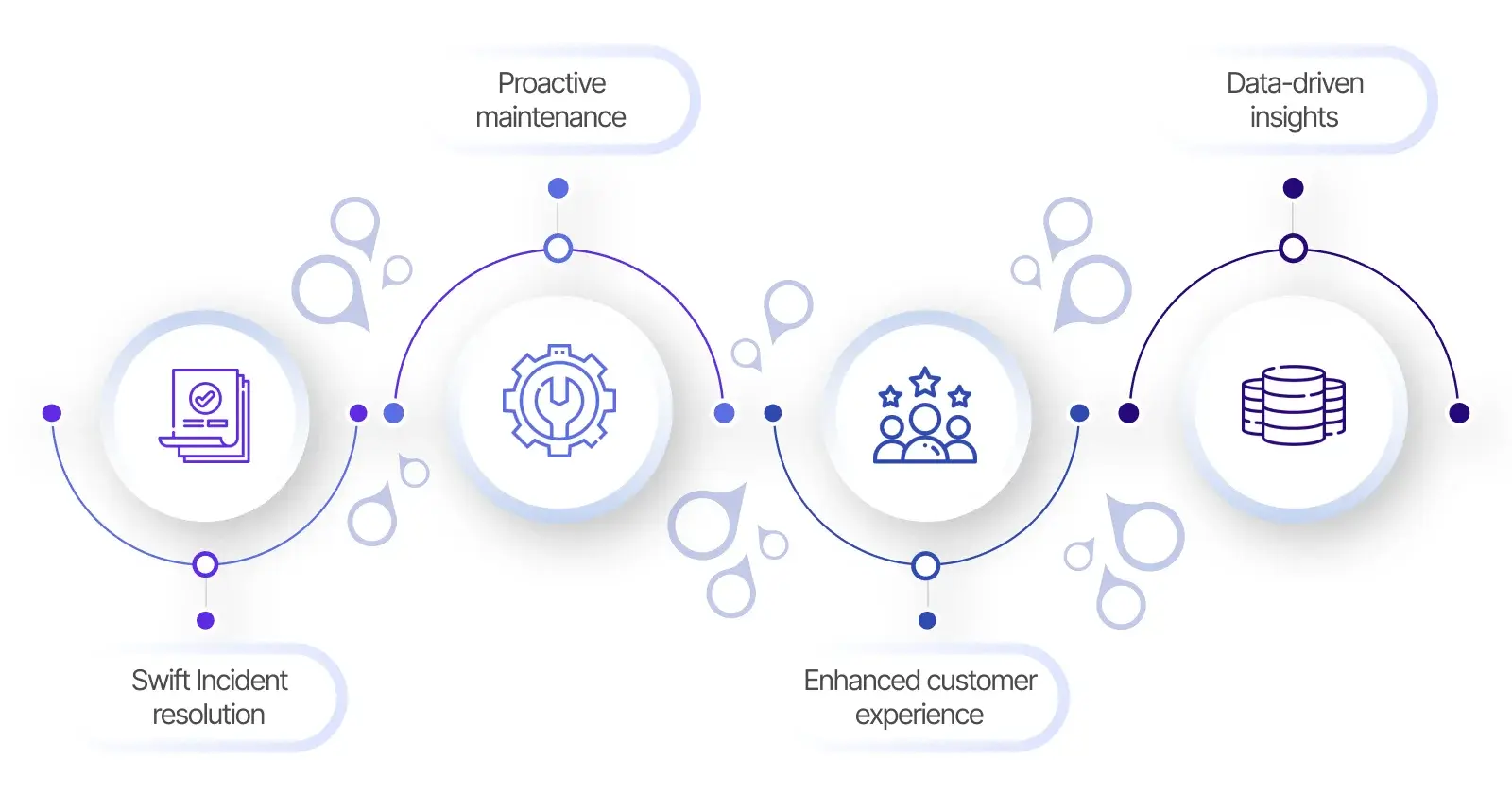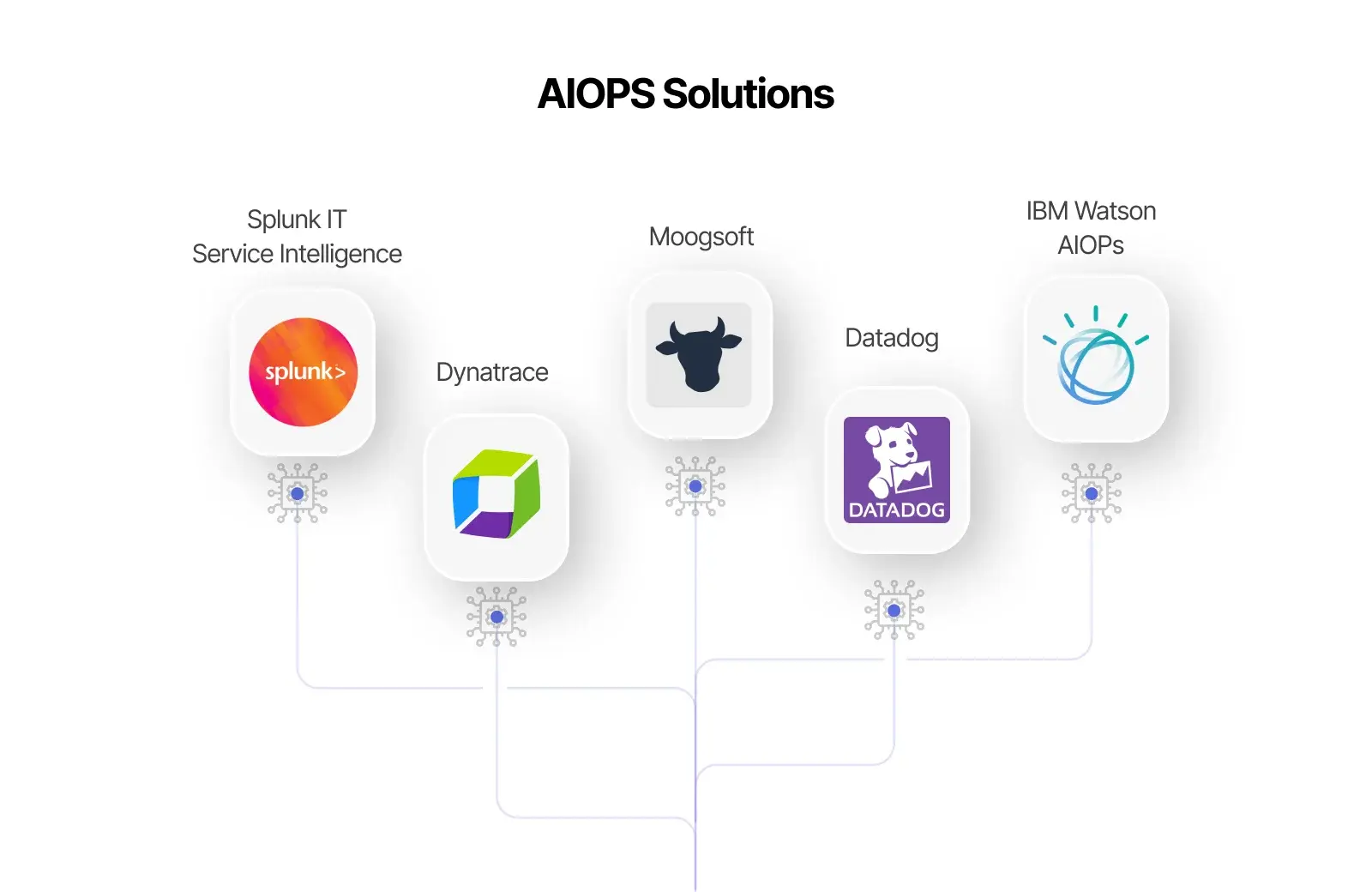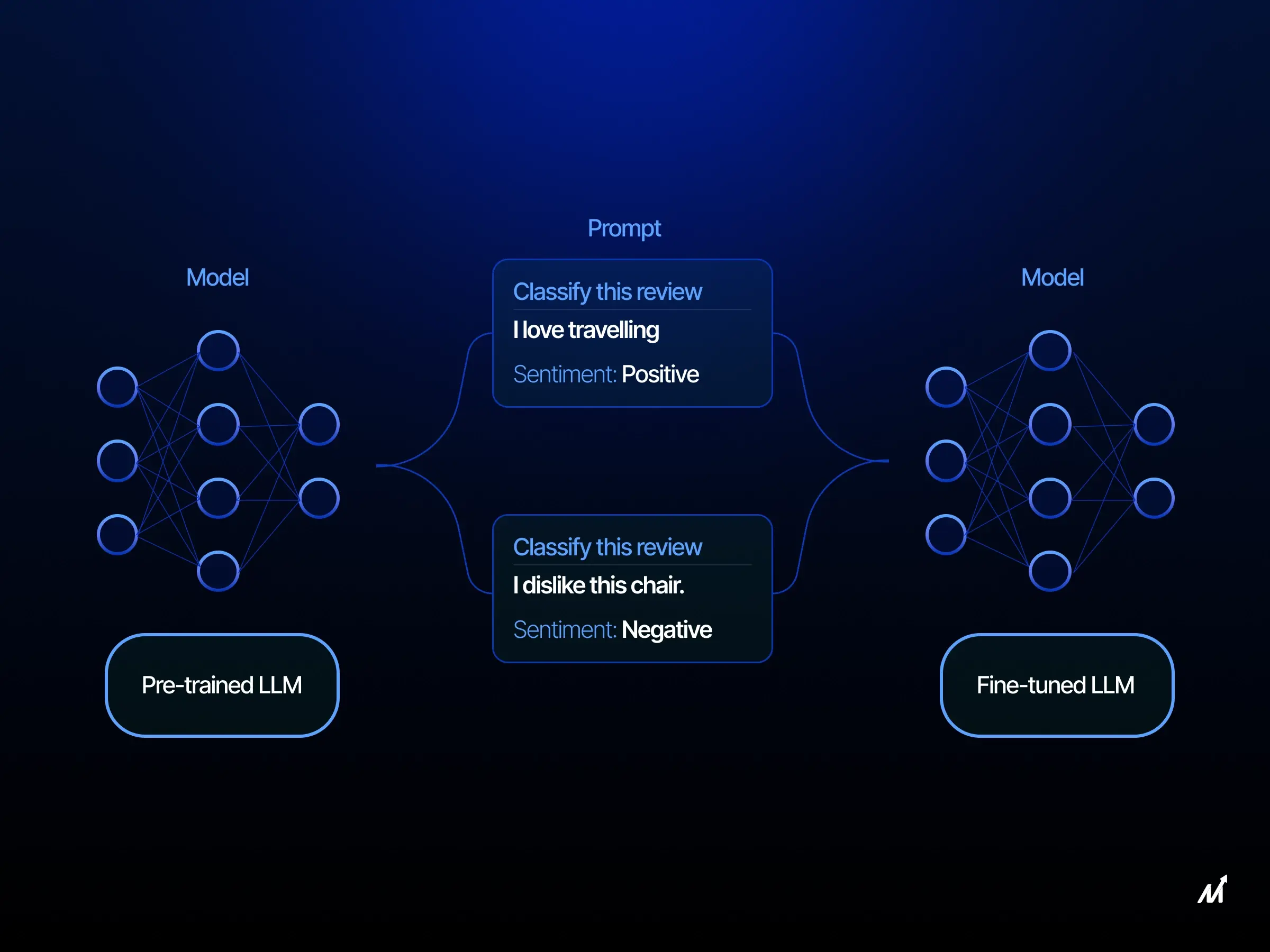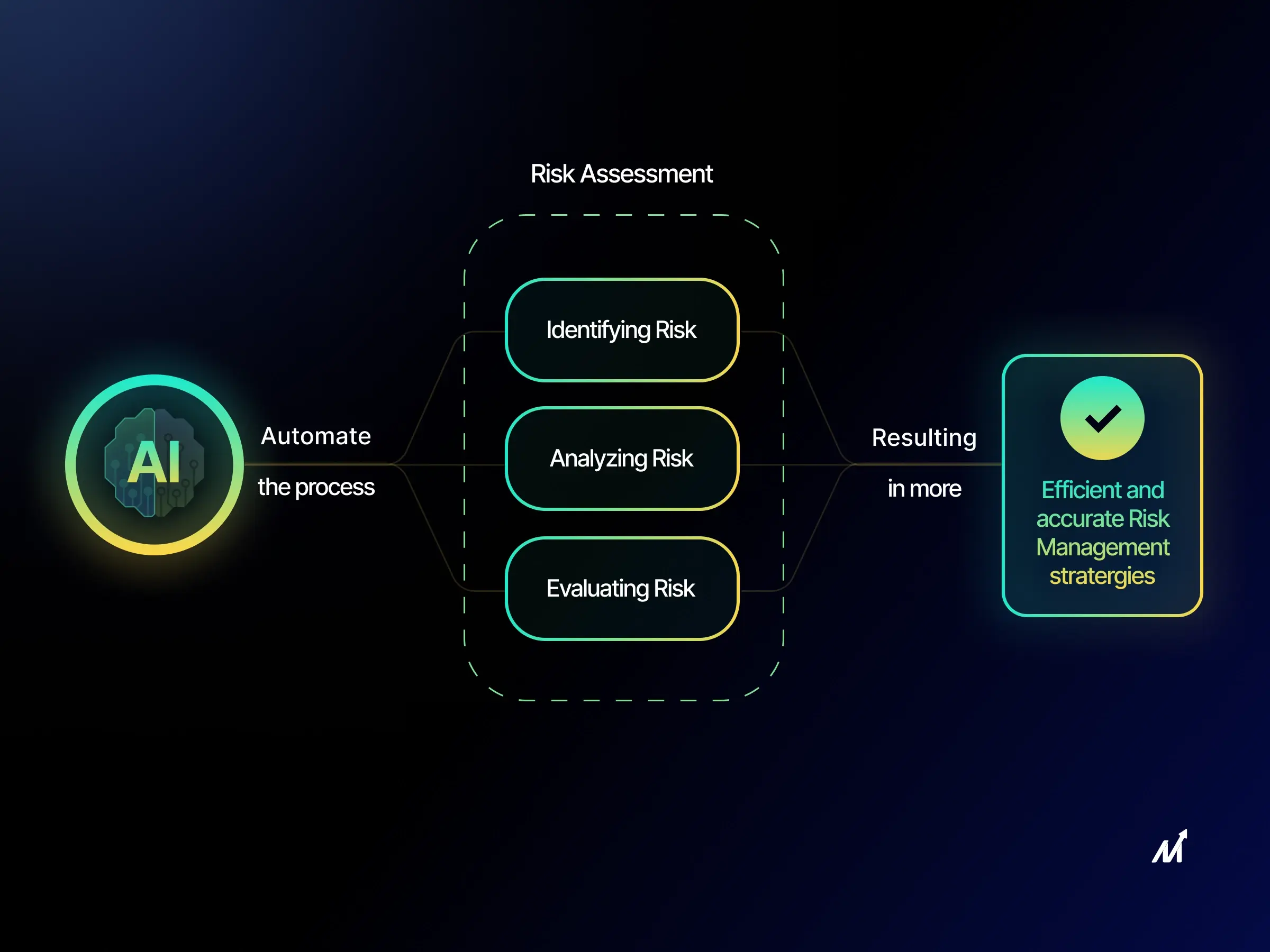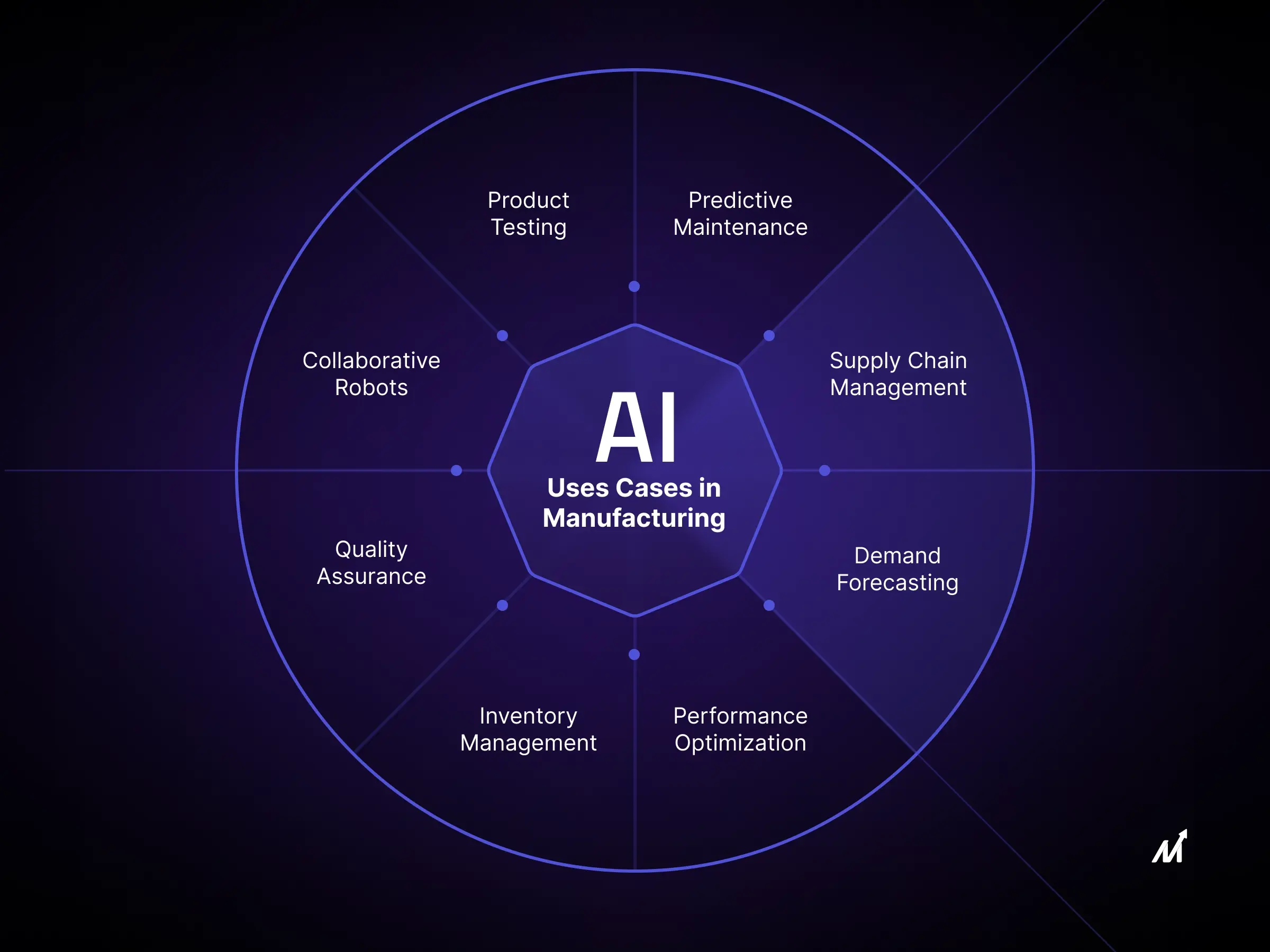AI has been catalyzing a revolution with human-like simulation. Its ability to learn, reason, and correct itself every time makes it special. These features make it triumphant in addressing complicated issues. It is one of those areas where AI excels, And this is possible with AIOps. Expanding to Artificial Intelligence for IT operations, it has been deploying its capabilities to optimize the industry’s processes. Sounds Interesting already? We will explore all about AIOps here seamlessly.
What is Artificial Intelligence for IT Operations (AIOps)?
As the name hints, Artificial Intelligence for IT Operations (AIOps) is that facet of AI employed for predominantly curating issues related to IT operations. In this process, multiple recent AI technologies ranging from big data analytics to machine learning, are leveraged to ascertain and sort out complications. The upsides don’t stop here, there are tons of AI applications all businesses should know. Every case study and decision is stored and utilized by the AIOps for refining future decisions outside the operations as well.
Origin of the cutting-edge IT revolution
IT department operations are not just about programming but also about ensuring the system’s maintenance. This process had multiple tasks ranging from monitoring messages to large data logs. Administering the same was chaotic due to scarce sources and high costs. This led to the idea of AIOps. While the DevOps team assembled to derive a solution, what added complexity was the distributed nature of the systems. The initial solution was IT Operations Analytics (ITOA). ITOA gathered and analyzed the operations to ease the decision-making processes.
The progressive solution was AIOps. Gartner, who coined this name in 2016, mentions that AIOps is unique because it combines big data and machine learning abilities not to optimize but to automate IT operations. The precision expected was such that this could be employed for event correlation, anomaly detection, and casualty detection.
What makes AIOps Imperative?
IT operations (ITOps) team plays a crucial role by ensuring some standout responsibilities so that the operations are streamlined strategically. These encompass:
- Supervising the computing and networking hardware, thereby the software they work on,
- Ensuring the computing devices are timely structured and cope with new configurations,
- Keeping a set of reliable restoring systems, updates and service outages to serve those in need,
- Being ready to face disasters with backup plans.
AIOps back all of these processes. Gartner, in this context, rightly remarks that AI for IT Operations (AIOps) improves dexterity and productivity of ITOps by:
- Constant monitoring of the systems and alerting in case of issues/emergencies,
- Handling the service management of the IT operations, and
- Ensuring automation by ensuring harmony between various stakes.
Remarkable Features and Limitless Capabilities of AIOps
Like any other technology, AIOps comes with different levels of upsides based on comprehension and implementation at the right time. Regardless, there are a few unique features significant to mention:
- Elevating collaboration among various IT teams and thereby coalescing them onto a single network,
- Costs of projects can be brought down significantly due to the proper realization of inefficiencies in mechanical efforts and, thereby, fine-tuning resource allocation,
- Most of the AIOps are designed to cope with the audit processes, thereby enforcing regulatory obligations as well.
- Implementing AI makes ensures unceasing learning and, thereby, seldom ensures meticulous and superior algorithms.
With the above features, AI for IT operations brings about unmatched potential to the organization. Moreover, some noteworthy capabilities include:
- AI maintains reliable automation, and AIOps ensures the same. Especially when it comes to processing regular issues or requests from various departments, Artificial intelligence for IT operations often stays ready to respond and solve the scenario without humans directly involved in it.
- Handling and storing large data from various IT departments, and thereby helping coordination between data groups and It teams. This is made sure by collection, grouping and use of them during decision-making.
- While most humans feel some data is noise, AI for IT operations possesses the ability to notice and grasp signals from these noises to detect any issues in the performance, thereby, emergency events. For example, it may recollect data before the previous decisions and look for similar results to predict upcoming disasters.
What happens in AIOps?- A brief note of its captivating framework
Four different stages of AIOps can explain the approach. For instance, in some cases, a single tool handles all these stages; in others, there can be four different tools for each of these stages.
Data collection:
The entire process starts with accumulating information from various sources, from event logs to reporting tools. This stage is not just about collecting but also about scrutinizing the information collected to fabricate data tags based on past trends, experiences and patterns. We can nearly estimate the scenario this way.
Data analysis:
This step uses the prewritten and learned algorithms to standardize the expertise through codes. These codes of algorithms strive to bring about the best outcomes by:
- Investigating past events
- Cognitive computing
- Evolving new algorithms
- Delving into behaviours and undertakings.
Automated response:
One crucial aspect of AI is automation. In particular, this takes a new turn in AIOps as we instigate a reaction from data collected and scrutinized. Let us look at it with examples; if any of the systems are out of storage, the tool gives instant access to supplementary space. Similarly, if there is an issue from the developer’s end, AIOps can resolve that with a detailed stepwise solution.
Visualization:
This phase is all about presenting the actions and data in a form that can be discerned by the executives and other officials in power. Consequently, AIOPs let users generate human-friendly formats like reports and infographics.
Why AIOPs draw you in?
AIOPs can augment the expediency of the system when integrated properly at appropriate timing and tempo. While it is reliable, scalable, flexible and faster, some other enthralling perks can drive you in:
- Swift Incident resolution: Since AIOps have access to a large set of data and the ability to analyze, they can nimbly ensure a response, drastically reducing the mean time to resolution (MTTR).
- Proactive maintenance: AIOps have analytics tools that can perform a foresightful evaluation of issues, thereby deciding upon the maintenance process without unforeseen disruptions.
- Enhanced customer experience: Faster response and resolution minimizes the resolution time, enhancing reachability, resilience and customer satisfaction.
- Data-driven insights: The accuracy of the results, decision-making and algorithms refined over time as they are amplified with past trends and data collected.
Enthralling AIOps use cases in action
Interpreting AIOPs is incomplete without knowledge about where it actually fits and works. Therefore, we will thereby dive into a few use cases to see where and how AIOPs function.
Anomaly detection:
AIOPs access, store, and analyze large high volumes of data. Consequently, they can identify distinguished signals. With this, they review if these cues are indicators of adverse circumstances. Thus, it warns the enterprise beforehand, letting the damage minimal.
Expediting Root Cause:
In many cases, the reasons for the larger issues can be very small. Thus, AIOPs turns reliable in finding the root cause effectively; This process can be hard to impossible for human engineers. For instance, if the data report has some gaps, AIOPs can find out what caused this gap from its retrieved memory. Dynamic thresholding: In many scenes, the system data generated are cyclic with an approximate pre-determined threshold. Therefore, AIOPs can check these regular trends and find bizarre behaviour, if any. The service is top-notch in this way.
Event Clustering:
For a particular event or the decision related to it to be taken, a few similar or related past events are to be considered for evaluation. Thus, AIOPs ensure this in the form of event clustering. Here the events that matter are highlighted and prioritized, preparing for action.
Smart alerts:
This feature is handy for enterprises working from multiple locations. In case there are any data or service issues in any location, the tool can raise an issue in no time. As a result, this makes spotting and rectification of issues effortless.
Cloud compatibility/adoption:
Working in an environment with multiple clouds may become a hassle due to different user interfaces and the inability to switch between them. However, hybrid cloud adoption by AIOPs can diminish these restrictions.
Markovate can streamline its software development services by harnessing the above applications of AIOps to ensure premium quality and make your system robust,
In-demand AIOPs solutions in the Market
Wondering what AIOPs are currently available today? Well, here are a few choices for you. These have remarkable records and reliability as well.
Get in touch with Markovate to create a tailor-made adaptive Ai to leverage the full potential of these AIs in IT operations for your enterprise.
The future of AIOps
The trajectory of AIOps in the commercial arena is undergoing a period of unbridled expansion. Consequently, a symbiotic convergence of artificial intelligence and IT Operations Management (ITOM) is propelling a burgeoning marketplace. Multiple sectors now acknowledge AIOps as instrumental for their data ecosystems, thereby cementing its utility across diverse ITOM activities. Market analyses underscore an inevitable uptick, valuing the AIOps sector at an estimated $2.1 billion by the close of 2025, with a Compound Annual Growth Rate (CAGR) nearing 19%. Moreover, additional projections indicate an extension of this growth curve, ballooning the market to an astronomical $80.2 billion by 2032, fueled by a robust 25.4% CAGR from 2022 through 2032.
Post the advent of Generative AI
The advent of generative AI platforms, epitomized by the meteoric ascent of Chat GPT, augments this narrative. Moreover, the versatility of generative AI is poised to infiltrate the AIOps landscape in a multi-faceted manner. Preliminary studies and technical examinations hint at its applicability in engendering software codes. Furthermore, the utility extends beyond mere coding and infiltrates the rudimentary engineering paradigms, prominently in test case origination. One aates a seismic shift in operational observability and resilience mechanisms, illustrated by potential applications in penetration testing activities. Generative AI’s capacity for scrutinizing non-linear, unstructured data sets—ranging from auditory data points to conversational transcripts—is another avenue of its expected ingress.
The precise dimensions of the impact generative AI will exert on AIOps capabilities remain somewhat nebulous, pending empirical validation. Nonetheless, it is incontrovertible that as enterprises deepen their commitment to digital metamorphosis, the incorporation of AIOps fortified by generative AI technologies will evolve from an elective strategy to an operational imperative. Therefore, the unfolding chapters of AIOps are not merely iterative updates but are transformative algorithms recalibrating the very essence of enterprise IT operations.
AiOps’ Transformative Quest ahead
In the era of ever-revolutionizing technologies, AIOPs undoubtedly have a special place in transforming IT operations. Every enterprise may have some issues where AIOPs find a chance to fit into and catalyze automation, analytics and real-time data. As a result, this utility enhances how IT teams operate and provides unmatched reliability and efficiency. With AIOPs in the basket, one can effortlessly see a transformative journey of the IT industry in the near future, where human intelligence converges effortlessly for unprecedented operational excellence. If you are looking to leverage the virtues of AIOps for your company, contact us for a consultation and hire developers from Markovate to achieve your enterprise goals sooner. Additionally, you can leverage the advantage of AIOps for your enterprise by using our expertise in generative AI, Adaptive AI development, and large language model development services as well.

